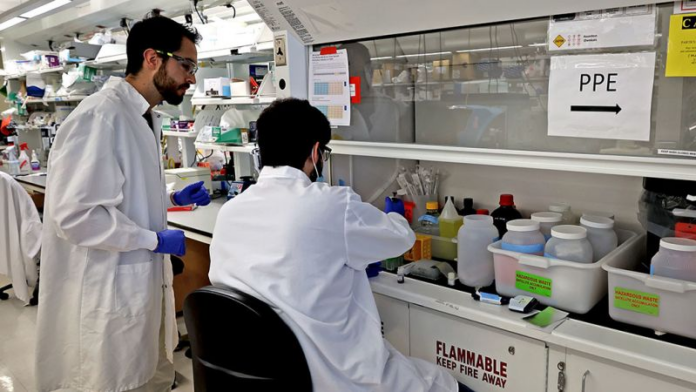Editor’s note: Tom Frieden, director of the US Centers for Disease Control and Prevention from 2009 to 2017, is president and chief executive of Resolve to Save Lives and senior fellow for global health at the Council on Foreign Relations.
CNN —
The United States’ response to H5N1 – “bird flu” – has been fragmented and inadequate. With three cases reported in people in the United States and clusters from Michigan to Texas, it’s clear that the virus is widespread among animals. To protect people, animals, and our economy, and to restore trust in public health, we need to get this right.
We’ve seen H5N1 coming for more than 20 years. Finland stopped H5N1 in animals before it spread to humans last summer. This story, along with a half-dozen other outbreaks that never made headlines, are featured in our new Epidemics That Didn’t Happen report.
Finland did three things well:
Rapid response. Within 24 hours of the first cases being reported on a mink farm, Finland confirmed that the animals tested positive for highly pathogenic avian influenza H5N1, which was already known to be circulating among birds in Finland. Human and animal health officials worked together immediately to track infections, including testing at-risk people working on farms with infected animals.
In the United States, H5N1 has been spreading since at least late last year. Even today, the United States doesn’t know the extent of spread among animals or humans due to insufficient testing and tracking. The 7-1-7 target for outbreak detection and response should be our guiding principle: 7 days to detect a suspected infectious disease outbreak, 1 day to notify public health authorities to start an investigation and 7 days to complete the initial response. This approach can halt outbreaks before they spread. Finland’s response met this target. The first 7 in the US for H5N1 was more like 100 days. We have to improve the connection of human and animal health and strengthen animal public health measures.
Trust. Farmers already had high trust in the Finnish Food Authority after years of successful programs and had launched a surveillance program that resulted in rapid notification of unusual symptoms among their animals. Farmers were reimbursed for the value of animals that needed to be culled to stop disease spread, strengthening trust in the government among the farming community. This trust will no doubt help Finland’s next move: Vaccinating frontline workers against H5N1. They are the first country to do so.
Trust toward the United States government is low, especially among rural Americans who are at the front line of these outbreaks. In May, in an effort to build trust with the farming community, the US Department of Agriculture announced financial incentives to farms to help stem spread in dairy cattle, including covering veterinary expenses for cattle testing positive for H5N1, compensating farms that supply personal protective equipment to their worker, and paying farm workers to participate in USDA and CDC studies. We may need to do more to protect our nation’s agricultural sector.
The US Department of Agriculture is ordering dairy producers to test cows that produce milk for infections from highly pathogenic avian influenza before animals are transported to a different state. Justin Sullivan/Getty Images/File
Coordinated government response. Human health and agriculture officials in Finland coordinated closely, paving the way for a rapid, effective response. Joint responses strengthened detection, worked with industry groups, and protected workers from infection. Finland rapidly passed new legislation to ensure that its Food Authority had the mandate to implement effective control measures.
In the United States, government agencies have had rocky relationships given varying priorities, legal authorities, agility and politics. Coordination seems to be improving. Any directives from the government should be crafted to the specific needs of each community; national mandates will likely not be practical given our country’s size and diversity.
Get CNN Health’s weekly newsletter Sign up here to get The Results Are In with Dr. Sanjay Gupta every Tuesday from the CNN Health team.
We have a lot to learn and no time to lose. First, states and national authorities must work with one another. This will require multiple federal agencies – including CDC, USDA, APHIS – and their state counterparts to share information transparently and in real time with each other and with the public. Second, Congress needs to provide resources to respond to the next pandemic and also for systems, workforce, and infrastructure so we are prepared to stop new and unknown events before they become epidemics. Third, and perhaps most importantly, we must quickly build relationships with farm owners and workers by being responsive to their needs and addressing questions and concerns.
If one country responds to H5N1 well, that’s not enough. Microbes know no borders. Every country – including the United States – needs to mount an effective response. My organization’s latest Epidemics That Didn’t Happen report highlights how countries with responsive health systems prevented outbreaks from becoming epidemics through early detection, careful planning, and swift action.




